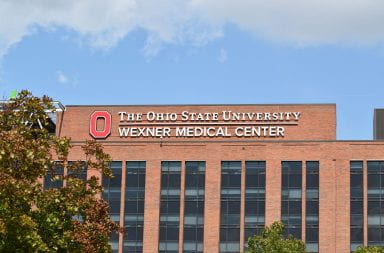The construction of the world’s most powerful telescope is underway, and Ohio State’s Department of Astronomy is playing a major role.
The Large Binocular Telescope will be the world’s largest telescope on a single mount and will have 25 times the light-gathering power of the Hubble Space Telescope.
“We will be able to see the faintest and most distant objects in the universe,” said Patrick Osmer, chairman and professor in OSU’s Department of Astronomy.
Osmer said the LBT project is significant for the department’s status as one of the top 10 in the country.
“It serves as a magnet and a focal point for attracting good students and faculty, which adds strength to the program,” Osmer said.
Gerald Newsom, vice chairman of the astronomy department, said the project will attract both graduate and undergraduate students interested in building scientific equipment.
“There’s a tremendous need in astronomy for people good at designing optical instruments,” Newsom said.
OSU’s Department of Astronomy is working on two important features of the LBT.
One is the aluminization system that will place a reflective coating on the LBT’s 30-foot-long primary mirrors. This work is being done at Columbus’ Rickenbacker Airport.
In the basement of McPherson Laboratory, the department is building a multi-object double spectrograph.
Darren DePoy, astronomy professor and vice chairman of the instrumentation department, said they have been building the spectrograph for the past two years.
“The spectrograph gets attached to the back of the telescope,” DePoy said. “As the telescope points its way around the sky, it carries the spectrograph with it.”
Spectroscopy allows astronomers to analyze light from distant objects at both ultraviolet and optical wavelengths.
DePoy said the four-meter-long spectrograph is about the size of a big car.
OSU shares in the LBT’s construction with partners from around the world, and holds a one-eighth share of the LBT’s cost. Partners include the University of Arizona, Italian observatories and German institutes.
The Research Institute, a private foundation in Arizona with the remaining one-eighth share, has given portions of the LBT’s observing time to OSU and the universities of Notre Dame, Virginia and Minnesota.
DePoy said when construction is complete sometime in 2004, the instruments will be shipped to Mt. Graham International Observatory in Arizona, where the telescope will operate.


